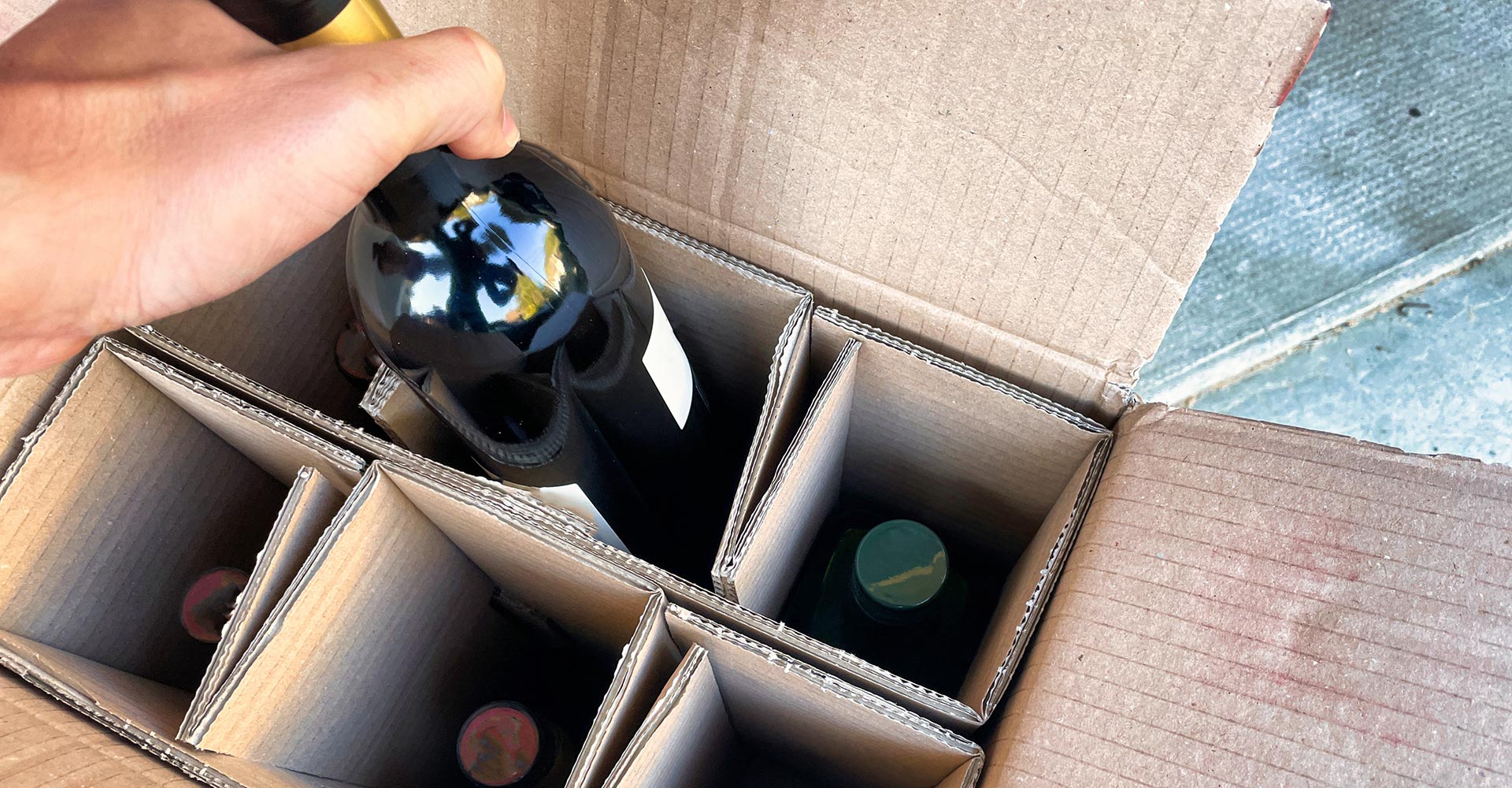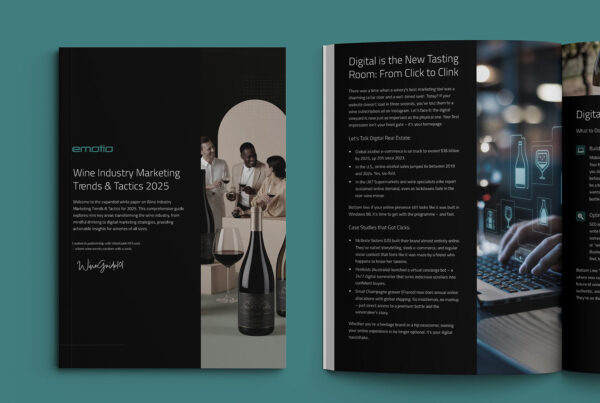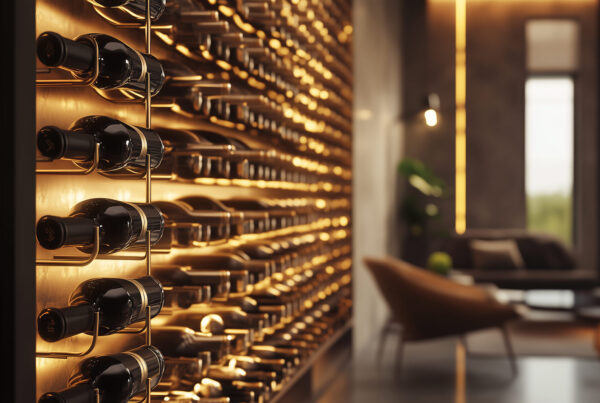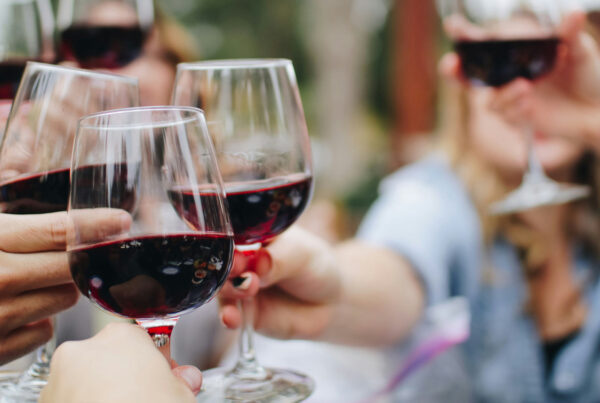Not long ago, buying wine online felt like a novelty – a futuristic convenience reserved for those too busy (or too lazy) to visit their local bottle shop. Today, it’s an industry staple, yet the landscape is evolving at breakneck speed. From the rise (and challenges) of direct-to-consumer (DTC) sales to the growing influence of marketplaces like Vivino, wineries and retailers must adapt or risk becoming the digital equivalent of a corked bottle—unwanted and left on the shelf.
So, what does the future hold for online wine sales? Is it all doom and decline, or are we looking at a new era of innovation, engagement, and perfectly paired algorithms? Let’s pour ourselves a glass and explore.
A Market in Flux: The Online Wine Sales Shake-Up
The wine industry, much like a fine vintage, has had its ups and downs. The U.S. market in 2024 saw a dip, with total volume declining by up to 5%. But before you start panic-drinking your cellar reserves, consider this: industry experts predict that 2025 could bring stabilisation, with a chance of recovery in the latter half of the year.
The real challenge isn’t just about sales figures; it’s about shifting consumer behaviour. Younger drinkers are expanding their horizons, swapping their Bordeaux for craft beers, spirits, and ready-to-drink cocktails. Meanwhile, at-home drinking remains a dominant trend thanks to hybrid work models, leading to increased demand for premium boxed wines and bulk purchases. The takeaway? Convenience and value matter more than ever.
For wineries and retailers, the key to survival lies in adaptation. Understanding these evolving trends and tweaking marketing strategies accordingly will separate the winners from those left swirling in the dregs.
Direct-to-Consumer Sales: From Boom to Bottleneck?
There was a time when the DTC model was the holy grail of wine sales. Wineries could ship directly to consumers, building brand loyalty while bypassing the traditional retail middlemen. But in 2024, something shifted. The DTC sector saw a 10% drop in shipment volume, marking the steepest decline since tracking began. Even premium wines, once immune to market fluctuations, experienced slower growth.
What’s behind this downturn? A few culprits stand out:
• Inflation: Consumers are more price-conscious, prioritising essentials over indulgences.
• Rising shipping costs: Many balk at hefty delivery fees, especially when they can pick up a similar bottle at their local wine shop.
• Saturation: The initial DTC boom has levelled off, and wineries are now competing harder for the same customers.
Yet, despite the challenges, DTC still holds value—especially in the premium segment. Consumers who buy directly expect an experience, not just a transaction. Wineries that focus on personalisation, exclusive membership perks, and seamless online experiences will keep their most loyal customers engaged.
The Rise (and Risks) of Online Marketplaces Like Vivino
Vivino, the Amazon of wine, has transformed how we buy and discover new bottles. With millions of users and endless reviews, it’s become a go-to resource for casual drinkers and enthusiasts alike. For wineries, the platform offers a massive audience, easy transactions, and invaluable data on consumer preferences.
But—and it’s a big but—there are challenges:
• Price pressure: With so many sellers competing, pricing wars can erode margins.
• Loss of brand control: Unlike DTC sales, businesses on platforms like Vivino don’t own the customer relationship.
• Reputation risk: A single bad review can impact sales far more than a negative in-store experience.
To thrive on these platforms, wineries must be strategic. Engaging with customers, responding to reviews, and offering a unique value proposition beyond price will help brands stand out in a crowded digital cellar.
Social Media: The New Wine Sommelier?
Once upon a time, wine marketing was all about glossy brochures and in-store tastings. Today, the most influential wine recommendations come from Instagram reels, TikTok sommeliers, and YouTube wine gurus.
Social media is no longer just a branding tool—it’s a direct sales driver. The key to success lies in engaging content that doesn’t just sell but tells a story. Some of the most effective strategies include:
• Short-form videos: A winemaker talking about a new vintage in 30 seconds can generate more sales than an entire website of tasting notes.
• Behind-the-scenes content: Vineyard tours, harvest days, and winemaking processes create a personal connection with audiences.
• Influencer partnerships: A well-placed shoutout from a respected wine influencer can move cases overnight.
As younger consumers continue to embrace digital discovery, wineries and retailers must rethink how they use social media—not just as a marketing tool, but as a full-fledged sales platform.
Subscription Fatigue: Reinventing the Wine Club Model
Remember when joining a wine club felt like an elite experience? Well, today, consumers are drowning in subscriptions. Between Netflix, meal kits, gym memberships, and premium apps, the average person is juggling more subscriptions than they can remember.
Wine clubs aren’t immune to this fatigue. Recent data shows a decline in new sign-ups and a dip in retention rates. But rather than abandon the model altogether, smart wineries are reinventing it.
What’s working?
• Personalisation: Let members tailor their selections based on preferences.
• Exclusive perks: Early access to new releases, virtual tastings, and free shipping add value.
• Flexible memberships: Giving consumers more control over their shipments can reduce churn.
A wine club today needs to feel like more than just a recurring purchase—it should be a community and an experience.
Regulations: The Ever-Changing Legal Landscape of Online Wine Sales in the UK
One of the biggest obstacles to online wine sales isn’t demand—it’s regulation. Selling alcohol online comes with a complex web of licensing laws, duty payments, and responsible retailing requirements. In the UK, businesses must navigate:
• Alcohol Licensing – Any business selling alcohol, including online retailers, must hold a premises licence under the Licensing Act 2003. This applies even if the business has no physical shop.
• Age Verification Laws – Online sellers must use robust age-verification processes to prevent underage sales, including Challenge 25 policies at the point of delivery.
• Alcohol Duty and VAT – Importing and selling wine in the UK means complying with HMRC’s duty requirements, which have been subject to recent reforms. The UK government’s new alcohol duty system, introduced in August 2023, bases duty on alcohol strength, affecting pricing and margins.
• Cross-Border Trade Challenges – Brexit has complicated EU-UK wine imports, with additional paperwork, customs declarations, and potential tariffs making cross-border online sales trickier.
For wineries and retailers, compliance isn’t optional—it’s essential. Keeping up with shifting duty rates, maintaining proper licensing, and ensuring seamless age verification processes will be critical for maintaining a smooth and legal operation.
Technology: The Digital Decanter of the Future
Online wine sales are no longer just about convenience—they’re becoming a tech-driven experience. Several innovations are shaping the industry:
• AI-powered recommendations: Algorithms that suggest wines based on past purchases and taste preferences.
• Augmented Reality (AR): Labels that come to life when scanned, offering immersive storytelling and tasting notes.
• Blockchain authentication: A new way to verify authenticity and combat counterfeit wines.
For wineries and retailers, embracing technology isn’t optional—it’s the key to staying relevant in an increasingly digital world.
A Toast to the Future: What Comes Next?
The future of online wine sales is dynamic, challenging, and full of opportunity. While the industry faces headwinds, the underlying consumer shift towards digital purchasing is here to stay.
For wineries and retailers looking to thrive, the recipe for success includes:
• Providing value beyond the bottle—whether through storytelling, personalisation, or premium experiences.
• Embracing technology to enhance customer interactions and streamline operations.
• Staying adaptable in the face of changing consumer preferences and legal landscapes.
Online wine sales aren’t going anywhere – they’re just evolving. The only question is: will your brand evolve with them?
Marketing That Moves With the Market
As online wine sales continue to evolve, wineries and retailers need more than just a great product – they need a smart, strategic approach to digital marketing. That’s where Emotio comes in.
We’ve spent years helping wine and spirits brands thrive in a fast-moving digital world – navigating the challenges of DTC, making sense of changing consumer behaviours, and building strategies that go beyond just selling bottles. Whether it’s crafting high-converting e-commerce experiences, launching social campaigns that tell a story, or staying on top of the latest tech trends, we know how to make digital work for wine.
If your brand is ready to adapt, grow, and stand out in an increasingly competitive market, let’s talk.
Now, if you’ll excuse me, I have a glass of something bold and full-bodied waiting. 🍷 Cheers!




